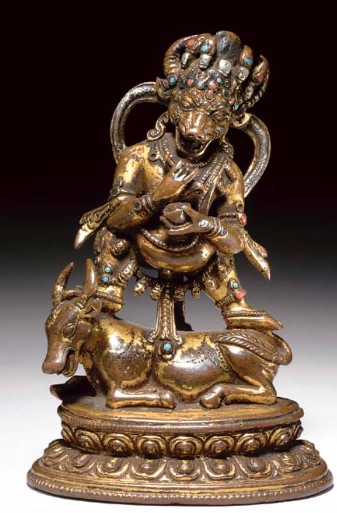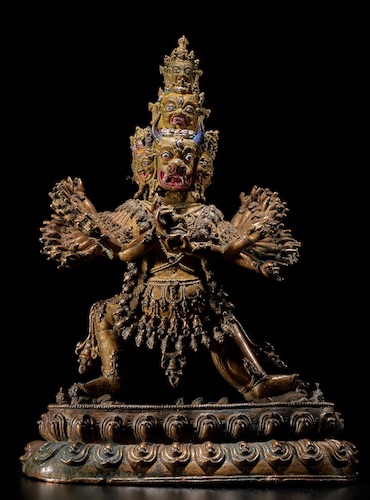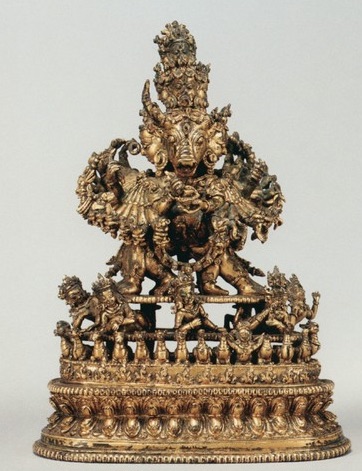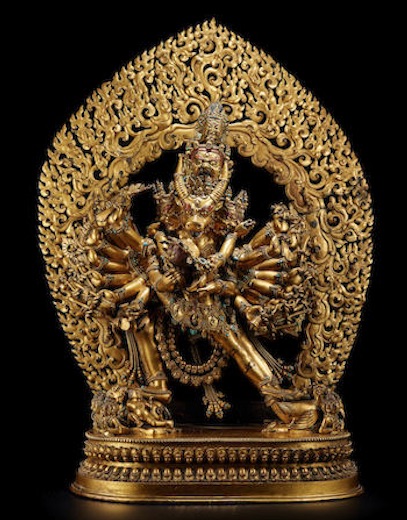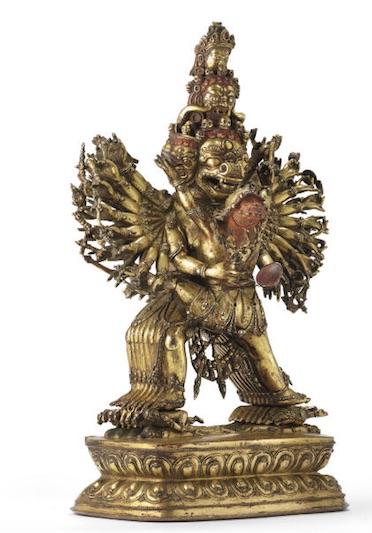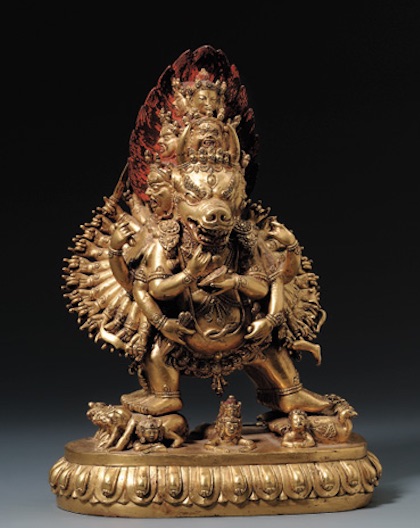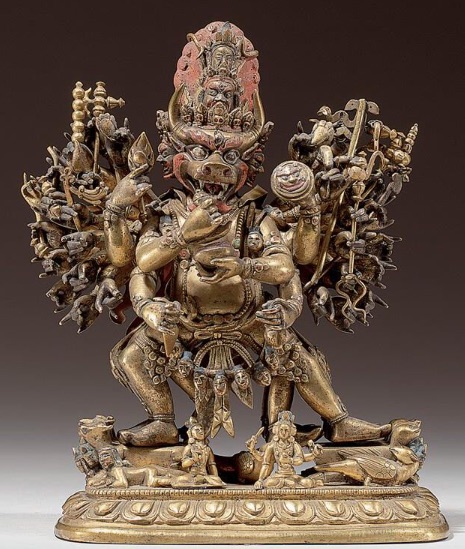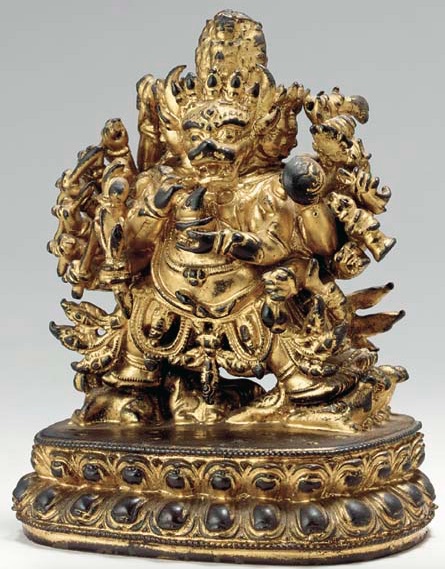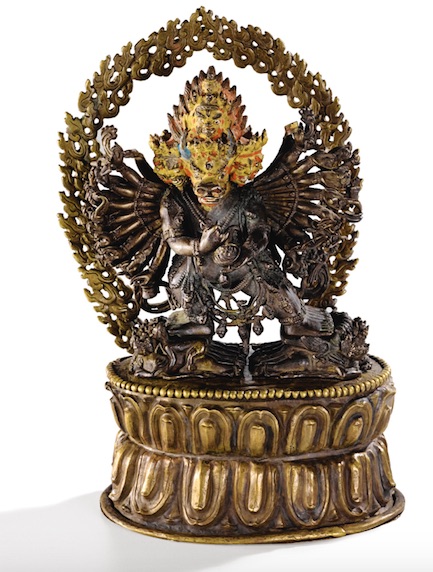18th century, (Tibet or Tibeto-Chinese?), Vajrabhairava (labelled ‘Shri Chakrasamvara’), bronze, 19 cm, Northern Himalayan Section photo 36 on wisdomlib, at the National Museum of Nepal.
The treatment of the buffalo head is reminiscent of a 15th century Vajrabhairava with the same morphology (9 heads, 16 legs, 34 arms) seen on HAR . This one is depicted in embrace with his consort, Vajravetali. His heads are arranged in a row of seven+one+Manjushri’s at the top. The lost pedestal likely featured gods, birds and other animals under his feet. He holds a flaying knife and a skull cup in his main hands, an elephant hide in his upper hands, and a variety of peaceful and wrathful implements in the others (including body parts).
18th century, Tibet, Vajrabhairava and consort, terracotta with polychromy and cold gold, 15 cm, private collection, on Michael Backman
18th century, Tibet, Vajrabhairava and Vajravetali, gilt bronze, 25,2 cm, private collection, Important Chinese Ceramics and Works of Art lot 2889, 30th May 2022, Christie’s (Hong Kong).
18th-19th century, Tibet, Vajrabhairava, bronze with cold gold and paint, 23 cm, private collection, Art d’Asie lot 34, 20th June 2017, Christie’s (Paris).
Unlabelled (circa 15th century? Tibet?, brass), Vajrabhairava, private collection, photo on HAR
With the same morphology but alone (ekavira form). Naked and ithyphallic, Vajrabhairava is usually adorned with skull crowns, a garland of severed heads, bone jewellery, and snakes. The above wears a cross-belt and a sacred cord made of a long snake tied across his chest.


















